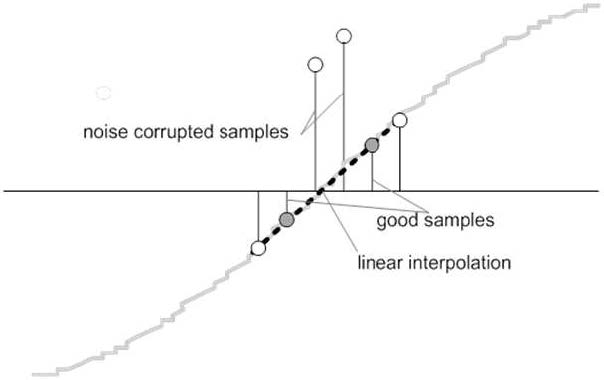TIDUF72 August 2024
- 1
- Description
- Resources
- Features
- Applications
- 6
- 1System Description
- 2System Overview
-
3Hardware, Software, Testing Requirements, and Test Results
- 3.1
Hardware Requirements
- 3.1.1 Software Requirements
- 3.1.2 UART for PC GUI Communication
- 3.1.3 Direct Memory Access (DMA)
- 3.1.4 ADC Setup
- 3.1.5 Foreground Process
- 3.1.6 Formulas
- 3.1.7 Background Process
- 3.1.8 Software Function per_sample_dsp()
- 3.1.9 Voltage and Current Signals
- 3.1.10 Pure Waveform Samples
- 3.1.11 Frequency Measurement and Cycle Tracking
- 3.1.12 LED Pulse Generation
- 3.1.13 Phase Compensation
- 3.2
Test Setup
- 3.2.1 Power Supply Options and Jumper Setting
- 3.2.2 Electricity Meter Metrology Accuracy Testing
- 3.2.3 Viewing Metrology Readings and Calibration
- 3.2.4 Calibration and FLASH Settings for MSPM0+ MCU
- 3.2.5 Gain Calibration
- 3.2.6 Voltage and Current Gain Calibration
- 3.2.7 Active Power Gain Calibration
- 3.2.8 Offset Calibration
- 3.2.9 Phase Calibration
- 3.3 Test Results
- 3.1
Hardware Requirements
- 4Design and Documentation Support
- 5About the Authors
3.1.11 Frequency Measurement and Cycle Tracking
The instantaneous voltage, currents,
active powers, and reactive powers are accumulated in 64-bit registers. A cycle
tracking counter keeps track of the number of cycles accumulated. When
CYCLES_PER_COMPUTATION number of cycles have been accumulated,
the background process stores these accumulation registers and notifies the
foreground process to produce the average results, such as RMS and power values.
Cycle boundaries are used to trigger the foreground averaging process because this
process produces very stable results.
For frequency measurements, a straight line interpolation is used between the zero crossing voltage samples. Figure 3-7 shows the samples near a zero cross and the process of linear interpolation.
 Figure 3-7 Frequency
Measurement
Figure 3-7 Frequency
MeasurementBecause noise spikes can also cause errors, the application uses a rate-of-change check to filter out the possible erroneous signals and make sure that the two points are interpolated from genuine zero crossing points. For example, with two negative samples, a noise spike can make one of the samples positive, thereby making the negative and positive pair appear as if there is a zero crossing.
The resultant cycle-to-cycle timing goes through a weak low-pass filter to further smooth out any cycle-to-cycle variations. This filtering results in a stable and accurate frequency measurement that is tolerant of noise.